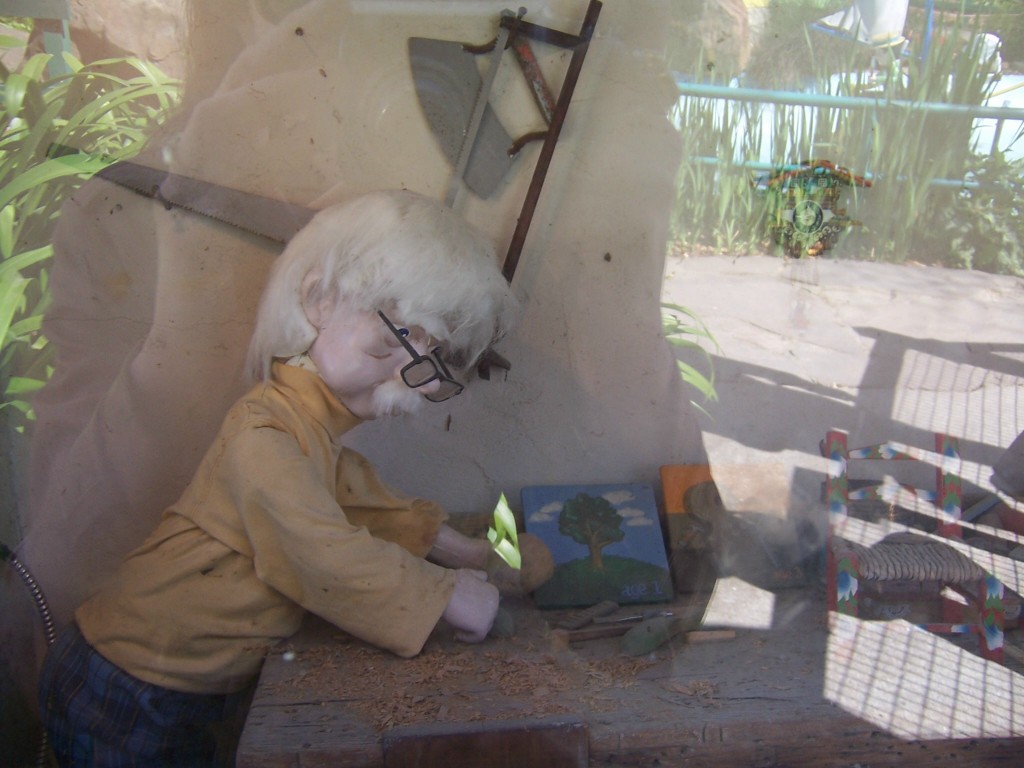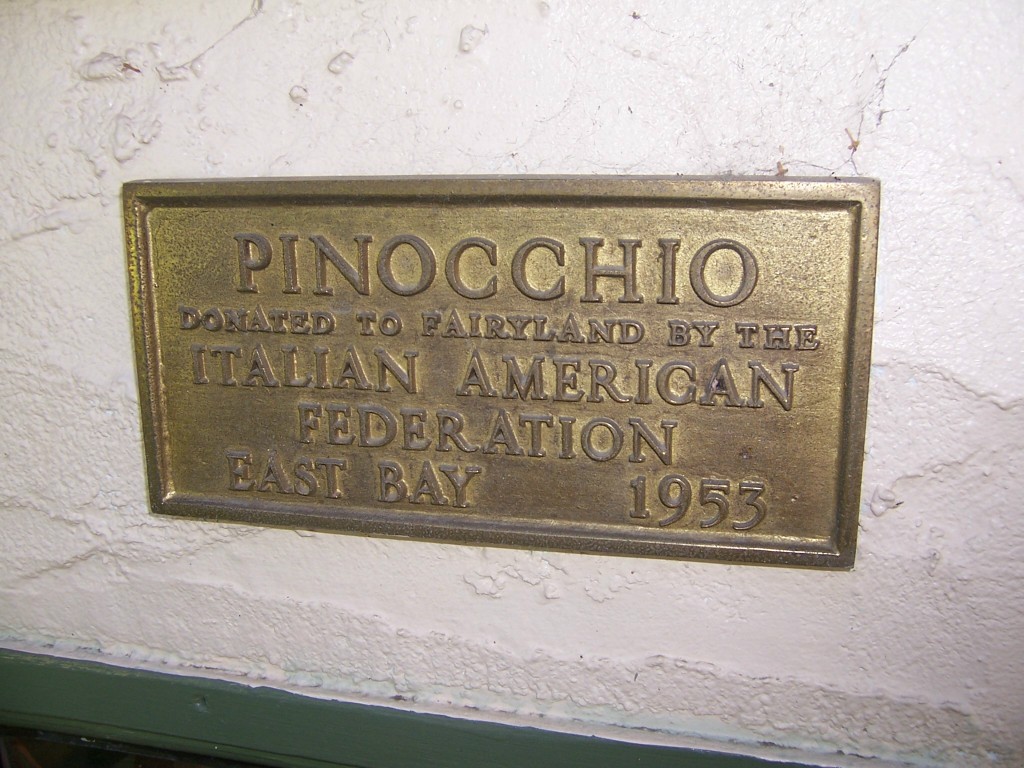Gepetto (sic), Fairyland, and Oakland’s Lost Italian Americans
(May 3, 2008)
City of Oakland
Entrance to Children's Fairyland, Oakland, California
Geppetto's been building Pinocchio for over 40 years in Oakland's Fairyland.
Children's Fairyland, an amusement park for preschool-age kids, sits on the edge of Oakland’s Lake Merritt, an artificial lake created in 1867 in the city’s downtown area. The park, with its child-sized diorama-like sets, celebrates fairytales and nursery rhymes. It opened in 1950 and still draws the juice-swilling masses today. Restoration of the park started (and is still going on) in the mid-1990s, but the place still feels pretty Old School. There’s a threadbare retro feel to the spot, made stronger by the heavily-pierced and tattooed teenagers who now work the concession stands and, dripping with irony, run the Jolly Trolly.
In addition to some of your standards—the houses of the Three Little Pigs and The Old Lady Who Lived in a Shoe—the park also boasts live animals (e.g., Coco, the 35-year-old pony and Bobo the sheep) and a live puppet show. Local lore has it that Walt Disney visited Fairyland and was inspired to develop the Happiest Place on Earth (Disneyland opened in Anaheim, California, in 1955).
The throwback feel of the park is perhaps strongest around the Pinocchio exhibit. Carlo Collodi's wooden puppet sits with his long nose jutting out of a tower, as though someone confused his tale with that of Giambattista Basile's Petrosinella's.


Below him is the pen for Fairyland’s donkeys—alluding, perhaps, to one of Pinocchio’s more unfortunate moments. In front of the donkeys is Gepetto’s Workshop, with the gentle old carpenter busily at work. (Similar to other Italian American words--think Mama for Mamma, Nona for Nonna--Geppetto has dropped a double consonant in its trip across the water.)

But what makes the set stand out as a relic is the plaque that credits its funding to the Italian American Foundation of the East Bay (IAF), giving its donation date as 1953. The IAF, an umbrella organization for Italian American social clubs, still operates today, but, as with Oakland’s Italian American culture generally, it is much less visible.

Not too long ago, I briefly interviewed Robert Schultz, who worked at Fairyland for about 16 years as the Parks and Civic Department Designer and Builder. He told me he rebuilt Gepetto’s Workshop sometime between 1967 and 1969, he couldn’t recall exactly.
He said he re-shingled the old workshop and added a lot of detail to the interior.
An avid tool collector, he said he patterned the workshop on elements from his grandfather’s shop that he recalled from his childhood, using some old tools from his personal collection. Before building the workshop, as with the other dioramas at Fairyland, he would build a model and present it to whoever was paying for the set—like in this case the IAF.

I have yet to uncover some of the specifics of Pinocchio’s history—like did the IAF give more money to Fairyland around the time Schultz worked on it? And who decided on Pinocchio? Did the IAF come up with the idea as a way to represent Italian culture for children? (BTW: Disney's cinematic version of Pinocchio, with evil represented through the hyper-Italian Stromboli character, as Pasquale Verdicchio outlines in his Devils in Paradise [4], came out in 1940.)
In any case, seeing the ways in which an Italian American social organization played a role in the formation of the city by encouraging links between city planning and an Italian (American) identity says something, it seems to me, about community-building and place-making. That the exhibit emphasizes Gepetto's skilled labor might even suggest another important connection to a reality of Italian immigrant life that is all-too-often overlooked or whitewashed.
Italian American identity in Oakland is pretty much under the radar of public visibility today. The Temescal neighborhood barely suggests its Italian American past (see my previous post [5]). And yet hundreds of people pass by this tiny marker, a notation that links its creation to a particular moment in the history of the San Francisco East Bay’s Italian American community.
Related Links
TAGS
Carlo Collodi [9] children [10] Fairyland [11] Gepetto [12] Geppetto [13] Giambatista Basile [14] Italian American Federation of the East Bay [15] Italian American social organizations [16] material culture [17] Oakland [18] Petrosinella [19] Pinocchio [20] Temescal District [21]



